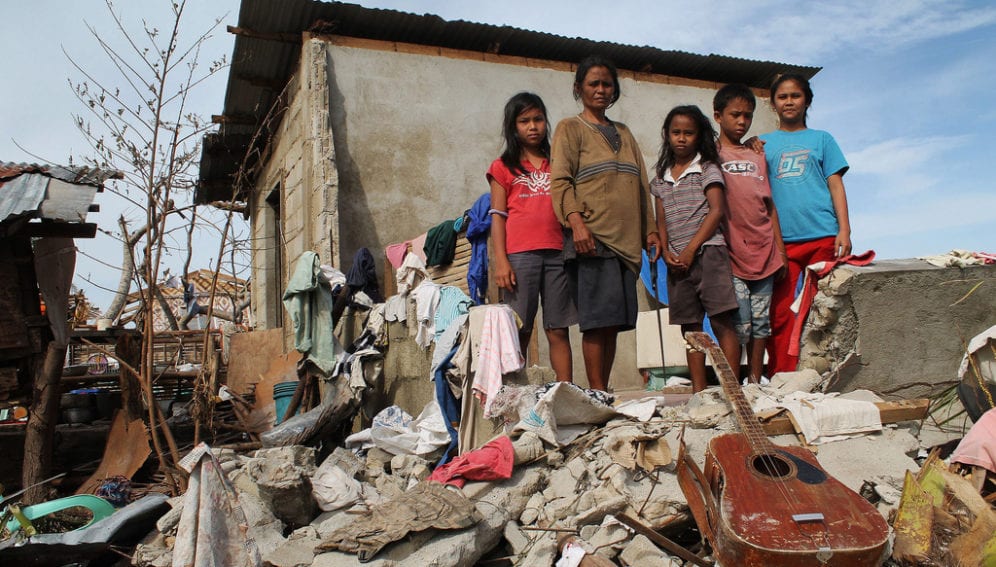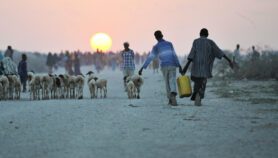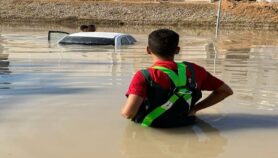By: Roger Williamson
Send to a friend
The details you provide on this page will not be used to send unsolicited email, and will not be sold to a 3rd party. See privacy policy.
Archimedes allegedly said “give me a place to stand and I will move the earth” as a graphic illustration of the power of levers. In a SciDev.Net piece last week, a climate change negotiator from the Philippines says the time for negotiations is over and the time for action has come. We need an enormous lever to move world opinion on climate change — is science that lever?
Two things make this question more pressing than ever. Typhoon Haiyan’s terrible impacts in the Philippines show the power of extreme weather events, which climate change is forecast to make more destructive. At the same time, rich nations such as Japan are dropping previous pledges to slash their greenhouse gas emissions. [1] Of course this is especially worrying for the poorest nations who often the most likely to suffer climate related disasters.
We should recognise that there are three different issues entangled here: tackling climate change, disaster response and preparedness, and development. Science is relevant to each of them — but it can’t solve the problems alone (as a recently published report points out [2]).
“The time for climate change negotiations is not over. The human and economic costs of climate change are already being felt, and delaying a response will raise these costs in the future.”
Roger Williamson, Institute of Development Studies
Debates about whether Haiyan was caused by man-made climate change is a classic case of the “fallacy of misplaced concreteness” (to quote the philosopher A.N. Whitehead). You are never going to get that detail of information or direct proof of irrefutable causation. And those affected by the typhoon still need help.
Because of this lack of absolute proof, which is inherent in all science, important policy decisions have to be based on incomplete information. So climate change negotiators at this week’s UN climate change conference have to decide based on a judicious evaluation of the evidence available, which will not all point in one direction.
Then there is the issue of responding to climate-related natural disasters. Disaster relief specialists are already providing effective aid, helping based on what is workable — for example by fixing water pipes, and mobilising personnel and equipment. But it should be possible to use scientific insights for next time, such as ‘building back better’ with more-resilient infrastructure and buildings. And could NASA maps of threatened areas be made available in advance of climate catastrophes rather than afterwards? [3]
The time for climate change negotiations is not over. The human and economic costs of climate change are already being felt, and delaying a response will raise these costs in the future.
These negotiations are a deeply political process. Advocates of an effective international system to cut emissions must use science carefully and not ‘overclaim’ by directly attributing one extreme event to man-made climate change. It is right, though, to draw conclusions from evidence of more frequent and extreme weather events. And it is certainly necessary for the Philippines authorities to factor this evidence into their future disaster preparedness plans.
Roger Williamson is an independent consultant and visiting fellow at the Institute of Development Studies at the University of Sussex, United Kingdom. Previous positions include organising nearly 80 international policy conferences for the UK Foreign Office and being head of policy and campaigns at Christian Aid.
References
[1] Vidal, J. Climate change pledges: rich nations face fury over moves to renege (The Observer, 17 November 2013)
[2] Institute of Development Studies Climate Change, Disasters, and Development Post-2015 (IDS, 11 November 2013)
[3] Kramer, M. NASA Maps to Aid Super Typhoon Haiyan Disaster Relief (Yahoo! News, 14 November 2013)














